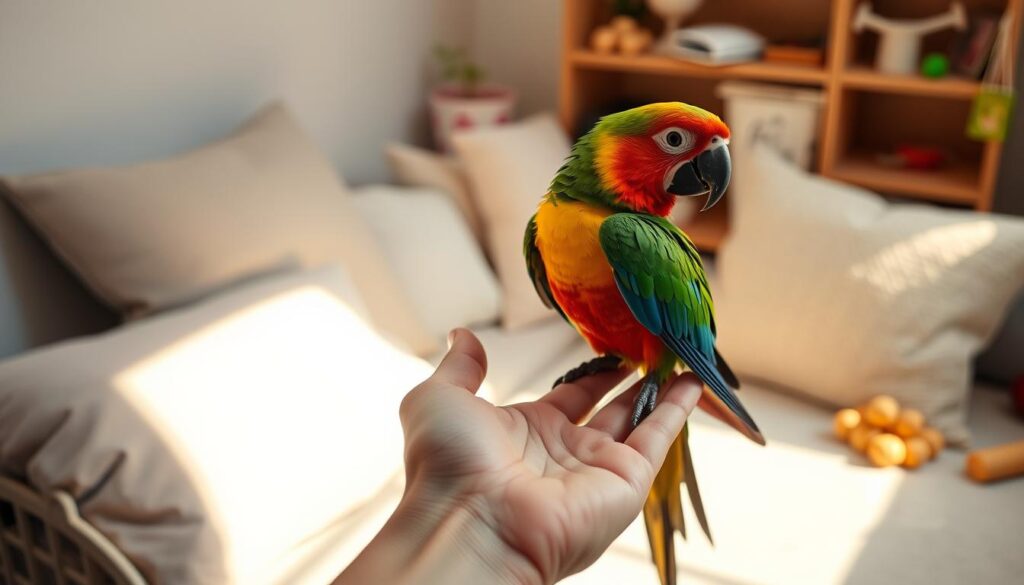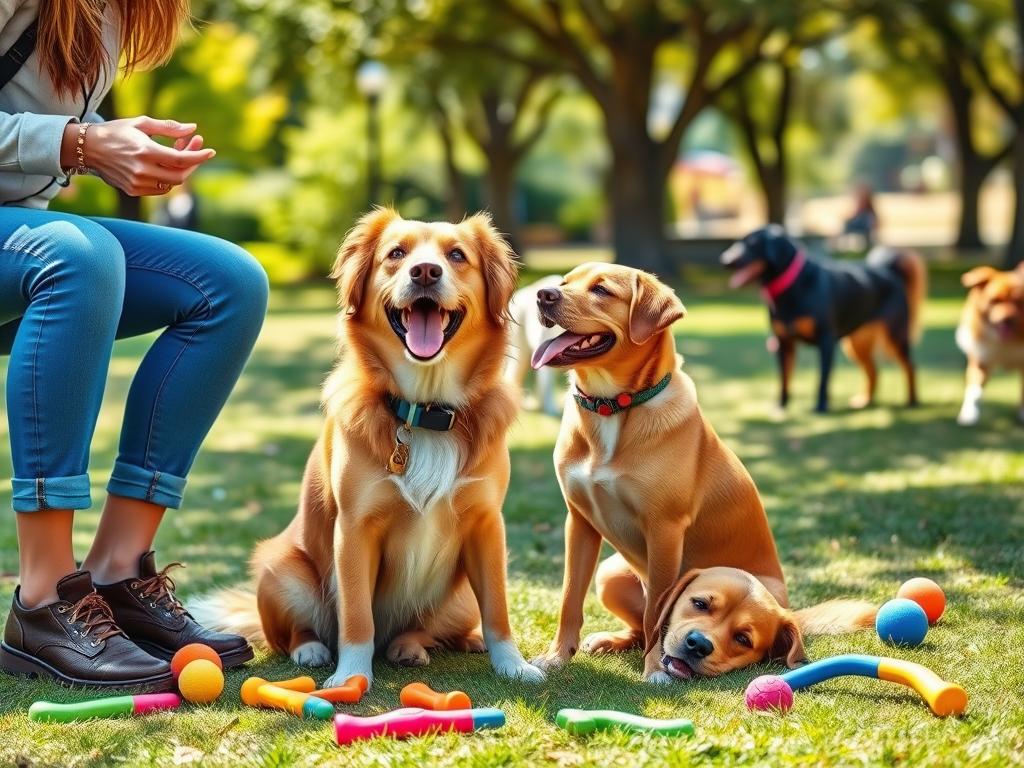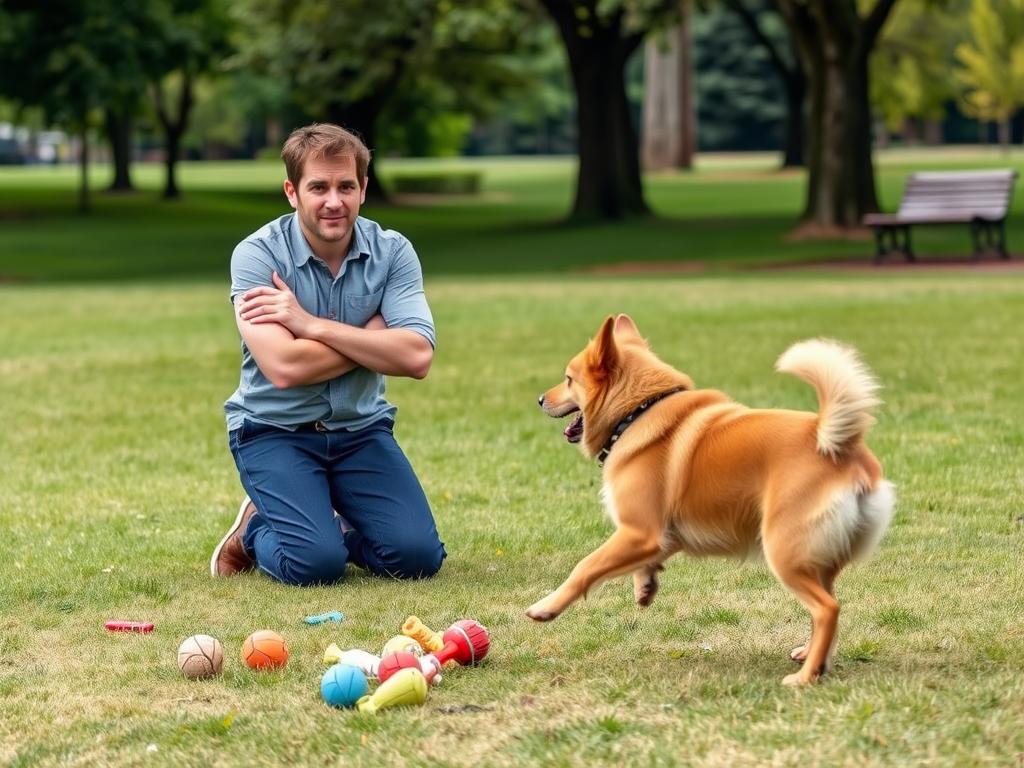As a new bird owner, the excitement of welcoming a feathered friend into your home can quickly turn to concern when Bird Biting becomes an unexpected challenge. Perhaps you’ve experienced the stigma of a sudden, unexpected Bird Biting incident while trying to pet or interact with your bird.
It’s important to recognize that Bird Biting is not inherently malicious; it’s often a sign of fear, territorialism, or simply a way for birds to communicate their moods and needs. Understanding the reasons behind Bird Biting is the first step toward creating a positive and safe environment for both you and your bird.
Understanding how to stop your bird from biting starts with knowing why it happens. Just like humans, birds have feelings and preferences, and they may express these through their beaks. With the right approach in bird behavior training, alongside positive reinforcement training for birds, you can not only discourage biting but also foster a deeper bond with your avian companion.
It’s crucial to recognize that many aspects contribute to biting behavior, from environmental factors to personal triggers unique to each bird. By learning to interpret your bird’s body language and practicing patience, you can gradually teach your feathered friend that human hands are not to be feared. The journey may require consistency and care, but with time, you can expect significant improvements. Let’s explore the common causes of biting behavior and how to effectively break the cycle.
Key Takeaways
- Biting is a common behavior among pet birds, often stemming from fear or stress.
- Understanding bird body language plays a crucial role in preventing biting incidents.
- Positive reinforcement training techniques can significantly reduce biting behavior.
- Birds need mental stimulation and appropriate toys to express their natural behaviors safely.
- Building trust through relaxed interactions can help in reducing aggressive biting.
Understanding Why Birds Bite
Understanding why birds bite is essential for effective bird biting prevention and management. Various factors contribute to biting behavior, often linked to the bird’s emotions and environment. Recognizing these motivations can facilitate better bird aggression management and create a more harmonious relationship between you and your feathered friend.
Common Causes of Biting Behavior
Birds can exhibit biting behavior due to fear, excitement, or true aggression. It is important to understand the signs, such as flashing eyes and rapidly contracting pupils, which may indicate an impending bite. Overexcitement from another bird’s presence often leads to biting the nearest person. Some birds may react defensively when they perceive a threat from someone approaching too quickly. Notably, physical discipline such as hitting a bird typically results in lost trust and increased fear of hands, rather than effective bird biting prevention.
Distinguishing Playful Biting from Aggression
Understanding bird body language is vital for differentiating playful biting from aggression. Many birds may bite during social interactions, which can be a form of play. However, aggressive biting often signals discomfort or fear. Techniques such as using distraction, stick training, and positive reinforcement can help manage these behaviors effectively. By fostering an environment that addresses emotional triggers, you can work toward retraining birds that may have inadvertently learned to bite. Observing and responding appropriately to their body language remains pivotal in this process.
Creating a Safe and Comfortable Environment
Establishing a comfortable and secure space for your bird plays a crucial role in preventing biting behavior. The right environment not only supports their well-being but also enhances your relationship with them. A well-thought-out setup reduces fear and promotes exploration, ultimately leading to a more harmonious interaction.
The Importance of a Secure Cage
A sturdy cage is foundational in creating a safe environment for your bird. It serves as their sanctuary, providing security while allowing them to feel protected. Look for cages that are appropriately sized, with bars that are close enough to prevent escapes but spacious enough to allow for movement. Incorporating soft perches and safe toys within the cage can also enhance comfort. When birds feel secure in their cage, they are less likely to exhibit stress-related behaviors such as biting.
Ideal Play Areas for Your Bird
Designing ideal play zones enhances your bird’s quality of life. These areas should encourage exploration and engagement, essential elements for their mental health. Utilize bird-friendly toys and activities that promote bird obedience training and support bird handling techniques. Rotating toys regularly keeps the environment dynamic and interesting. Additionally, creating various perching options and safe spaces for your bird can prevent boredom and the aggression that sometimes stems from frustration. When birds feel comfortable and entertained in their play areas, they tend to be less prone to biting.

Building Trust with Your Bird
Establishing a connection with a bird requires intentional efforts and an understanding of its behavior. Building trust with your bird can lead to a more harmonious and enjoyable relationship. Engaging in positive interactions allows both the bird and its owner to feel comfortable. The approach used plays a crucial role in ensuring that each encounter is conducive to fostering a bond.
Techniques for Positive Interactions
To effectively engage with your bird, incorporate bird training tips that prioritize gentle handling and create a secure environment. Avoid actions such as putting hands inside the cage or chasing the bird, which often provoke fear and trigger biting responses. A notable technique for building trust with your bird involves using a T-perch for safe interaction. This approach was beneficial for an aviary bred bird named Bluey, allowing for calmer encounters.
Clicker training serves as a valuable tool for reinforcing desired behaviors. By approaching the cage slowly and recognizing signs of fear, owners can click the clicker when the bird displays relaxed body language. Gradual closeness in training sessions promotes comfort and a sense of safety. Offering training treats, such as sunflower seeds, further enhances these positive interactions.
Signs of Trust Development
Recognizing the signs of trust development in a bird is essential for understanding bird behavior. When a bird begins to relax, engages more readily, and shows willingness to approach, these are positive indications of growing trust. Such behavior reflects the bird’s comfort level with its owner. Patience is key, and as trust solidifies, birds often display increased interest in social interactions.
Ultimately, the journey of building trust with your bird fosters a relationship that is rewarding for both. Engaging in consistent, gentle, and positive interactions promotes a stronger bond while reducing the likelihood of biting. A comprehensive approach, including recognition of signs indicating trust, enhances communication and nurtures a cooperative environment.
Positive Reinforcement Training
Positive reinforcement training for birds offers an effective means of encouraging desirable behaviors while reducing biting incidents. This training method leverages the principle that reinforcing good behavior with rewards can shape how birds respond to commands and interactions.
Using Treats Effectively
Using treats as rewards can significantly influence your bird’s behavior. Offering high-value food items during training sessions creates a strong association between desired actions and positive outcomes. This approach aligns well with various bird training tips, emphasizing that each treat can serve as an incentive for behaviors like approaching hands or stepping up on cue. By observing your bird’s preferences, you can select the most effective rewards to motivate them during training.
The Power of Consistency
Consistency is crucial in positive reinforcement training for birds. Establishing clear signals and maintaining the same approach each time helps birds understand expectations. Rewarding specific behaviors consistently strengthens the learning experience and fosters trust. By creating a supportive environment that encourages the right actions, pet owners can significantly cut down on biting behavior. Ensuring that treats and praise are delivered promptly rewards your bird’s efforts and reinforces good habits.

Recognizing Stress Triggers
Understanding the nuances of bird aggression management involves recognizing the diverse stress triggers that can affect your feathered friend. Birds, like other pets, are sensitive to their environment, and numerous factors may lead to stress-related behaviors such as biting. Taking the time to observe these triggers will aid significantly in promoting a peaceful and harmonious relationship with your bird.
Environmental Factors that Cause Stress
Various environmental changes can create an atmosphere of anxiety for birds. Loud noises, sudden movements, or unfamiliar people can cause significant stress. Birds are naturally inclined to interpret these stimuli as threats, potentially resulting in biting as a defensive response. Changes like moving to a new home, shifts in routine, or the introduction of new family members or pets can also trigger stress. Notably, some birds may exhibit physical symptoms such as stress bars on their feathers, signaling that their emotional well-being requires attention.
Identifying Your Bird’s Personal Triggers
Recognizing bird behavior is vital for proper intervention. Every bird is unique, and personal triggers can vary widely. Observing your bird’s reaction to specific situations helps in pinpointing its stressors. For instance, a sudden decrease in vocalizations or the emergence of feather picking can indicate distress. In some cases, birds may also engage in destructive behaviors due to boredom or lack of mental stimulation. Monitoring these patterns allows for tailored strategies aimed at reducing stress and minimizing aggressive tendencies.
Engaging Your Bird in Play
Understanding the importance of play is essential for cultivating a healthy relationship with your feathered friend. Engaging your bird in various activities not only helps redirect biting but also promotes overall well-being. Incorporating fun games into your daily routine can be an excellent strategy to keep your pet entertained and alleviate frustration.
Fun Activities to Redirect Biting
Many birds exhibit biting behavior due to boredom or excess energy. To counteract this, consider introducing activities like treasure hunts, where you hide treats and allow your bird to forage. Such engaging play transforms potentially negative behaviors into constructive ones, helping your bird discover its curiosity. Regular interaction during these activities raises the bond between you and your bird while reducing incidences of aggression.
Toys for Mental Stimulation
Providing toys that promote mental stimulation for birds is crucial. Selecting a variety of textures, colors, and shapes can keep your bird intrigued for hours. Toys that require problem-solving, such as puzzle feeders, encourage your bird to work for its rewards, thus satisfying its innate chewing instincts. Make sure to rotate toys frequently to maintain engagement, preventing your bird from losing interest in its surroundings.
Incorporate these methods into the daily schedule of your bird’s life. Encouraging play not only helps in managing biting behavior but also ensures that your feathered companion remains active and fulfilled. Understanding these techniques fosters better communication and a happier household.

Setting Boundaries with Your Bird
Establishing boundaries in the bird-owner relationship is vital for both your comfort and that of your feathered friend. Understanding bird body language serves as a crucial tool in recognizing when your bird feels uncomfortable or is about to bite. When caregivers fail to interpret their birds’ signals, biting often arises from fear or anxiety, leading to behavioral issues.
Understanding Body Language
Birds communicate primarily through body language, showcasing feelings of stress, anxiety, or contentment. A puffed-up chest, fluffed feathers, or quick head movements might indicate agitation. Observing these signs closely allows owners to respond appropriately, fostering a safer environment. Incorporating bird training tips that emphasize these signals can prevent misunderstandings, enhancing the overall relationship.
Gentle Corrections for Biting
When biting occurs, gentle corrections rather than punitive measures are essential. It’s crucial to teach acceptable behavior while remaining patient. Redirecting your bird’s attention or calmly placing them back in their cage can reinforce boundaries without creating fear. Consistency is key; reinforcing the same messages repeatedly helps modify unwanted behaviors. Integrating positive reinforcement can guide them toward more desirable actions and enhance trust.
Consulting a Professional
When persistent biting issues arise in your bird, it may be beneficial to seek assistance from avian specialists. These professionals are equipped with the knowledge and skills to address problematic behaviors such as aggression and fearfulness. Recognizing when to consult an avian specialist can be crucial in helping you improve your bird’s behavior, ensuring a happier and healthier pet.
When to Seek Help from An Avian Specialist
If your bird’s biting has escalated despite your efforts at positive reinforcement and enrichment, it might be time for professional intervention. Behavioral consultations can provide insights tailored to your bird’s specific needs. Specialists can assess your bird’s environment, relationship dynamics, and underlying stresses that may be contributing to their biting habits. Consulting avian specialists can further enhance your understanding of effective bird behavior training techniques, ensuring a balanced approach to your pet’s well-being.
Resources for Ongoing Support
In addition to professional training, consider utilizing resources that support your journey in managing bird behavior. Books, workshops, and seminars can offer valuable information on effective training methods and bird care. Engaging with these resources not only reinforces your skills but also creates community connections where you can share experiences and obtain support. For more insights on managing stress and enhancing cognitive performance in pets, you can explore this helpful guide that discusses various strategies that can also be applied to your bird’s training process.











